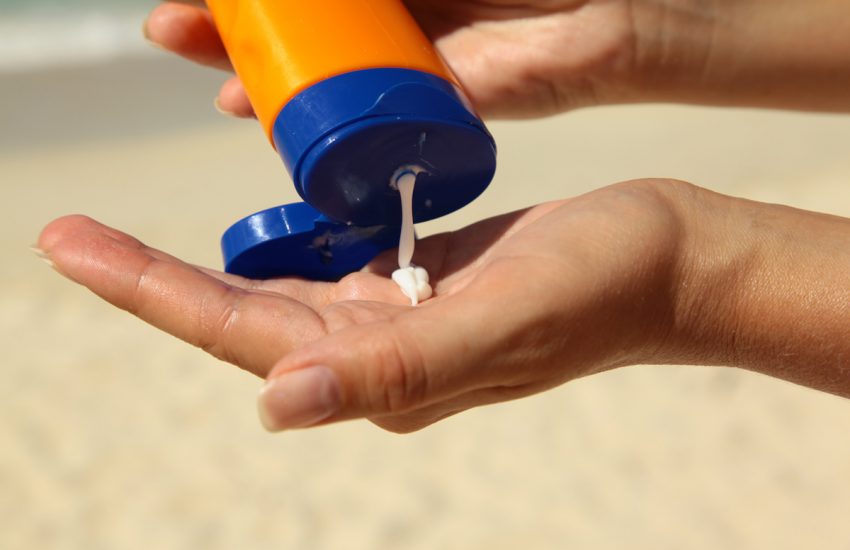Hawaii’s sunscreen ban has officially taken effect. In May 2018, Hawaii became the first state in the nation to ban the sale of over-the-counter sunscreens containing oxybenzone and octinoxate. The law went into effect on January 1, 2021, with the goal of preserving Hawaii’s marine ecosystems.
According to the language of the bill, Hawaii’s legislature found that oxybenzone and octinoxate, two chemicals found in many sunscreens, “have significant harmful impacts on Hawaii’s marine environment and residing ecosystems, including coral reefs that protect Hawaii’s shorelines.” Studies cited had found that oxybenzone and octinoxate caused mortality in developing coral; increased coral bleaching, which was indicative of extreme stress; and caused genetic damage to coral and other marine life. The bill noted that the contamination of Hawaii’s coastal waters was “constantly refreshed and renewed every day by swimmers and beachgoers,” and some mitigation was necessary. Proponents of the bill argued that the preservation of Hawaii’s shoreline was paramount, as “reef-safe” sunscreen alternatives were readily available, including lotions and other products that do not use oxybenzone and octinoxate and sun-protective clothing.
Oxybenzone is an organic compound known for its light absorption and stabilization properties. It is used in many sunscreen lotions, and in plastics and other materials to prevent UV degradation. The U.S. Food and Drug Administration approves the use of oxybenzone in sunscreens, up to six percent. Octinoxate is a liquid organic compound, insoluble in water, which is used in sunscreens and cosmetics to absorb UV-B rays from the sun. The FDA approves the use of octinoxate in sunscreens, up to 7.5 percent.
Hawaii’s law makes it unlawful to “sell, offer for sale, or distribute for sale … any sunscreen that contains oxybenzone or octinoxate, or both, without a prescription issued by a licensed health care provider.” When proposed, Hawaii’s bill was met with opposition from the Hawaii Medical Association, the Hawaii Skin Cancer Coalition, as well as manufacturers and retailers of sunscreen products, who argued that there was a lack of peer-reviewed evidence demonstrating the damage caused to coral reefs, juxtaposed with the overwhelming evidence of increased skin cancer risk from not wearing sunscreen. Opponents of the bill such as the Consumer Healthcare Products Association, the Hawaii Food and Industry Association, and the American Chemistry Council, further argued that Hawaii was drastically and unnecessarily reducing the selection of safe, effective, and federally approved and regulated, sunscreen products available to residents and visitors, and perhaps even discouraging consumers from using sunscreen.
Following Hawaii’s lead, in 2019, Florida’s Key West City Commission voted on a similar ban of sunscreens with oxybenzone and octinoxate. The ban in Key West was also set to take effect on January 1, 2021. However, in June 2020, Florida’s governor signed legislation preempting any city or county efforts to regulate over-the-counter proprietary drugs and cosmetics, which included sunscreen products. A similar ban was proposed in California, modeled after the Hawaii legislation, but the bill died in committee in January 2020.
The U.S. Virgin Islands, however, was successful in passing its ban on sunscreens that contain oxybenzone, octinoxate, and octocrylene, and took its legislation a step further—prohibiting travelers from bringing such sunscreens into the territory. The current Hawaii law does not prevent visitors from bringing oxybenzone and octinoxate-containing sunscreens into the state.
Outside of the United States and its territories, the countries of Aruba and Palau, and the Caribbean Island of Bonaire, have all implemented similar bans on the sales of sunscreens containing toxic chemicals shown to damage marine ecosystems.
National Geographic states that 14,000 tons of sunscreen are thought to wash into the oceans each year. While it will likely take some time to evaluate the effect of Hawaii’s ban on the health of its coral reefs, if the results are conclusive, we could see other coastal states taking similar measures to preserve their shorelines.

